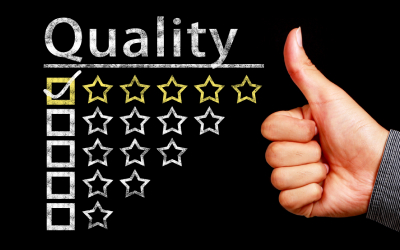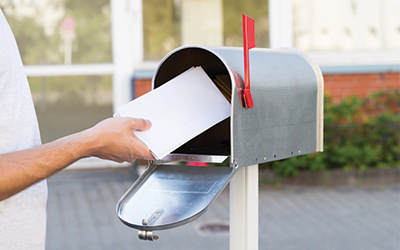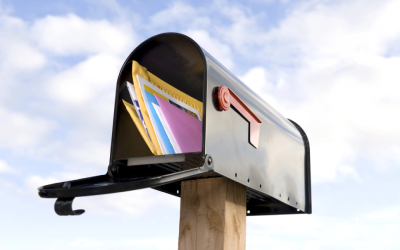The Direct Benefits Of Ease And Efficiency
Done right, direct marketing is user friendly for both businesses and customers. To achieve that, direct marketers must make it easy for existing or prospective customers to actually consume messages and either explore further or take action. They must also work to make it easy on themselves, directing the right offer to the right audience with the right data.
The first hurdle is contact. Whether postal mail, phone, email, or text, each depends on complete, accurate data records to be effective. Marketers must then make it easy for messages to actually be seen, by being available in whichever form is convenient or preferred by each recipient. Tools, technologies and platforms fueled by data have evolved to meet this need. They make it easy to blur the boundaries between marketing channels, online or offline. Each one has its own growth and volume story to tell.
Direct Mail
Direct mail is not only still relevant, but thriving as a brand connector. Receiving something physical and tactile doesn’t get old. Detailed data enables variable printing, personalization, and the ability to link to online resources, making it easy for recipients to explore further. The USPS reports 82% pick up mail at the first opportunity, while 55% open and review all pieces. Millennials spend more time (8.3 minutes) opening and reading mail than Gen Xers or Boomers. 50% of consumers reporting they tried a new product, service, or establishment within 6 months of receiving ad mail. (Remember this is with the ability to pre-screen mail using Informed Delivery.) The kicker is direct mail is a $44.2 billion industry, with a median ROI of 29%.
That workhorse of the internet – email – has made it easy to communicate quickly for business and personal purposes for decades. Email is is still incredibly popular. From a total of 281 billion daily emails sent and received in 2018, it is estimated the figure will rise to over 347 billion by 2023. Every day. Even before the pandemic, 51% of U.S. consumers preferred to be contacted by brands by email. Amidst the proliferation of many other newer ways to message, email remains a bedrock means of account verification for banking, shopping, and more. Finally, the bottom line is that email yields an average ROI of $42 for every $1 spent.
Ecommerce
Over the past year, ecommerce has enabled feeding and clothing ourselves, supplying our remote workspaces, gift giving, and even receiving healthcare via telemedicine. When all is said and done, global ecommerce sales for 2020 will reach $4.13 trillion. The growing use of smartphones has fed this trend. (Maybe the “e” really stands for easy.) Even before COVID, businesses were in the process of embracing the efficiencies and benefits of ecommerce sales and procurement. The trend will no doubt continue even afterward. In a recent McKinsey survey most businesses expressed belief that ecommerce platforms were equally or more effective than pre-COVID sales models.
Telemarketing
People respond to the sound of a human voice (even pre-recorded) when health issues (or distance) make face to face interaction impractical. Call centers make mass telemarketing campaigns (cold calling), customer care (service reminders and followups), and other outsourced business services simpler on both sides of the exchange. According to the most recent quarterly update from D&B First Research the US telephone call center industry includes about 5,300 establishments (single-location companies and units of multi-location companies) with combined annual revenue of about $22 billion.
Online/Offline Hybrids
The long awaited demise of print media has not materialized. The complete domination of digital media has not yet occurred. For marketers, technologies have emerged that, combined with the ubiquity of smartphones, facilitate the simple handoff from print to digital to leverage the best of each experience. Print has always enjoyed an advantage as a tactile experience. Custom codes (QR for example) allow a recipient to easily bridge the gap between print and digital to consume audio and video content as well as order as well as request more information and even place orders. Email retargeting, PURLs, dedicated toll free numbers and custom coupon codes hold a prospect’s attention and close the distance between first impression and purchase action. Direct marketers need to be equipped with complete data records for each customer in order to expand the ways to make a sale.
eConferencing/Videoconferencing
Internet based video chat and collaboration platforms like Skype, Zoom, WebEx, MS Teams, Google Meet and more have leapt into the breach enabling business and personal interactions to enter the vernacular (“Zoom call at 3pm…”). At times like these when teams are working remotely, and at all times when decision makers may be separated by great distances, these platforms allow the process of what might otherwise be in person sales presentations to proceed. Pulling together virtual face to face workgroups and sharing multimedia assets keeps the ball rolling when important transactions are being considered.
Developing all of these things is hard work. Building out the platforms and networks that bring them to billions of businesses and homes around the world is hard work. Years of research and development supported by significant infrastructure investment are required.
Driven By Data
Gathering, processing, and securely storing the data that powers it all is also hard work. Freshness, accuracy and strict compliance with privacy laws go hand in hand to yield actionable data that makes reaching customers with seamless experiences possible. Direct marketers must make it easy on themselves with the best possible data. This is where an expert, full service data provider you can trust becomes indispensable to direct marketing success.
Living and working through these turbulent times has underscored the value of ease and efficiency. The lockdown life has yielded rewards for direct marketers that embrace these virtues.




